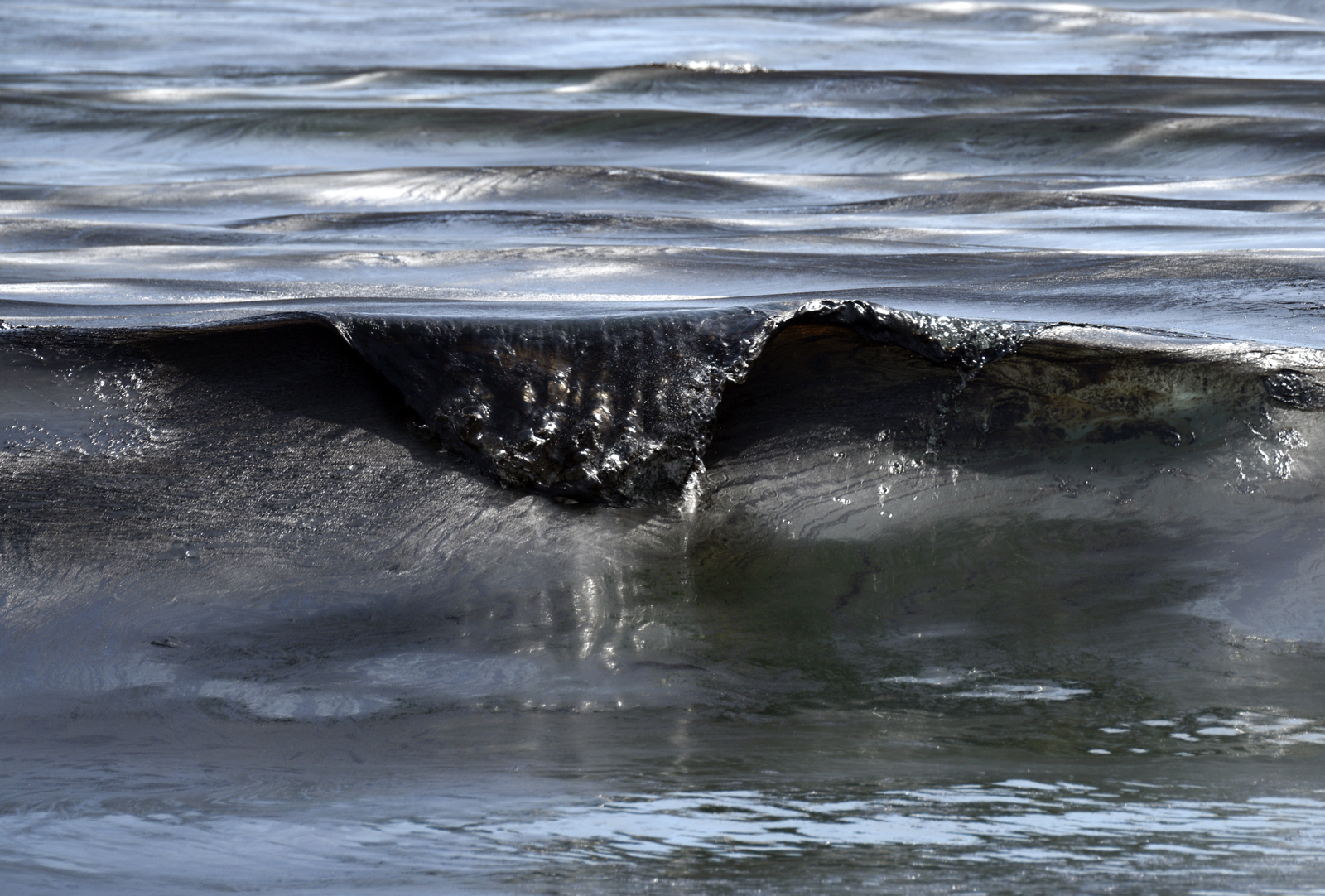Poodle to Exxon: Let Them Eat Bikes
Oil Giant’s New Trucking Proposal Sadly Lacking

Somewhere along the way, I discovered my brain had been snatched and replaced with a soft-boiled egg. Worse yet, it hadn’t been boiled long enough. The albumen floated to the surface, squiggly and clear, looking like some alien jellyfish.
In that moment, I found myself worrying whether area enviros were being fair to ExxonMobil.
Fair? To Exxon?
Had I suffered temporary ischemic attack? A full-on stroke?
I found myself questioning whether the enviros were being a little knee-jerk in their “just say absolutely not” approach to Exxon’s proposal to start hauling 70 tanker trucks of oil a day out of its Gaviota Coast storage facility. Was that really a “reasonable” position” to take? Exxon, for the record, wants to resume offshore production but has not been able to thanks to the Plains All American Pipeline company’s policy of premeditated negligence in the first degree,which blew up for all the world to see four years ago this Sunday.
That’s when a stretch of Plains’ pipeline that had been allowed to fester and rot until its walls were 92 percent corroded popped it cork, spilling 142,000 gallons of oil. Predictably much of that ran downhill under the freeway — via a culvert that everyone but Plains seemed to know was there — and leapt lemming-like into the ocean at Refugio State Beach, where it killed and maimed a wide range of sea creatures both uncounted and not. Local prosecutors sought to hit Plains upside the head with a $1.2 billion fine, but Judge James Herman regretfully fined Plains only $3.3 million, noting that was the most allowed by law.
Plains is now proposing to install 124 miles of brand-new, state-of-the-art pipeline, but the soonest that will happen is when the grandchildren I don’t have graduate from high school. In the meantime, Exxon wants to get its piggies to market via truck. Who can blame it? At first blush, 70 truckloads a day doesn’t sound like that much. And maybe it’s not. But in reality — at least theoretically — as many as 500 truckloads of oil a day could be on our roads. That’s if every offshore and onshore oil project now under consideration were to be approved. We know all that’s unlikely.

We also know that in the immediate aftermath of the 2015 pipeline spill, Exxon hauled 400,000 barrels of oil out of storage tanks at risk of overflow, hauling its product 350,000 miles without incident. Still, those of us who recall the gasoline tanker that jackknifed on Highway 101 in Goleta during the height of the Thomas Fire know from firsthand experience that just one crash is all it takes. In that instance, the 5,000 gallons of gasoline that spilled proved so caustic and destructive that Caltrans found itself forced to rebuild an entire new lane just as thousands of residents were seeking to flee the fire.
But here’s the deal. For 40 years, Exxon has conducted top-secret, state-of-the-art research detailing the impacts of greenhouse gases on climate change. In 1982, Exxon scientists were predicting — with uncanny precision — just how many parts per billion of CO2 would be in the atmosphere in 2019 and with what impact on temperature increase. Polar ice caps, Exxon scientists predicted, would melt. At the same time, Exxon was spending millions on a propaganda campaign to convince the world that the science behind climate change remained deeply uncertain.
When then-president George H.W. Bush was threatening to actually do something about climate change, Exxon spent $30 million funding pseudo-scientific-sounding front groups populated with born-again flat earthers — brash, articulate, and shameless — that claimed there was no scientific consensus. In hindsight, we know this effort proved exceptionally effective. When Bush pulled out of the Kyoto climate-change accord of 1992, he specifically cited uncertainties raised by the Exxon bankrolled coalition. The states of New York and Massachusetts and Washington, D.C., have recently taken Exxon to court over this, much the way many state governments sued the tobacco industry for covering up research establishing a clear link between smoking and cancer. I know some people dismiss such litigation as trendy. Trendy or not, I’d suggest the City and County of Santa Barbara join in. And with both feet blazing.
For the time being, it appears the County of Santa Barbara might have Exxon over the barrel. Now is the time county supervisors need to force Exxon to start building that “bridge to a carbon-free future” that oil industry shills have been talking about so incessantly. To date, there’s no evidence of any such infrastructure. Perhaps this is the same proverbial bridge conmen the world over have been selling to unsuspecting rubes and suckers. Now is the time for the county to exact that bridge.
Exxon’s trucking request is now in the foothills of environmental review. Exxon clearly has the permits needed to produce, store, and process oil here. It’s done so for more than 20 years. Trucking, however, is new. With Exxon shut down four years, the key question of environmental review is, What’s the baseline: full production or no production? If you assume “full production,” the impacts to be mitigated will be marginal. If you assume no production, however, Exxon could be on the hook for gobs of mitigations.
In honor of Bike to Work Week, I’d suggest the company be compelled to bankroll the construction of enough bike lanes and enticing infrastructure to lure even the most squeamish out of their cars and onto their bikes. Right now, only 6 percent of all trips in Santa Barbara are taken by bike. By California standards, that’s great. But in Europe — known to be wet and cold on occasion — the number is 25 percent.
If Exxon wants to haul oil, make them pedal it out on bikes.




You must be logged in to post a comment.